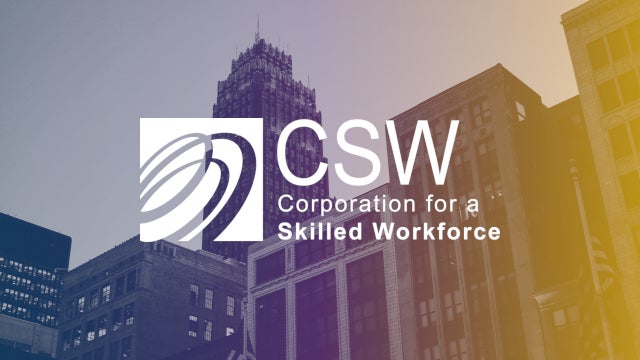This blog post is an excerpt from the Future of Work Initiative’s report Automation and a Changing Economy, released April 2019. The report is divided into two parts. Part I: The Case for Action, explores the impacts and history of automation, why this time may be different, and why action must be taken to maximize opportunity, minimize disruption, and ensure that the gains of automation are broadly shared. Part II: Policies for Shared Prosperity proposes 22 policy solutions to ensure that our increasingly automated economy is also one that promotes greater opportunity and broadly shared prosperity for all. Throughout the year, the Future of Work Initiative will republish many of these policy solutions.
Providing workers with more access to skills training is important, but steps must also be taken to ensure that there is a sufficient supply of good quality training available.
There are 876 public community colleges across the country, and the education and training they provide is often high quality, making them well positioned to provide effective training programs. Research has found that completing a training certificate at a public institution raises annual earnings by roughly 30 percent. Similarly, an analysis of California community college programs found that their career and technical programs raised earnings by 14 percent for certificates of less than 18 units, and 45 percent for associate degrees. Despite this evidence, community college funding has been sharply cut over the past two decades. Since 2001, state and local funding per full-time equivalent student has declined by 30 percent (after adjusting for inflation). Federal funding has risen over this time period, but not enough to fill the funding gap.
Policymakers should provide additional funding for community colleges to provide high-quality, in-demand skills training. The Aspen Economic Strategy Group has proposed increasing federal funding for community colleges to boost educational attainment, expand opportunities for mid-career skills development, and provide better career pathways for workers without college degrees. This funding should be based on (1) characteristics of the student body (with greater funding allocated to schools with greater shares of students from disadvantaged backgrounds); (2) the labor market conditions in the local community, such as the local employment rate; and (3) demonstrated improvements in student retention and completion.
In the last decade, many states have expanded support for community colleges by creating “College Promise” programs. Delaware and Tennessee were among the first states to develop these programs and over time other conservative and liberal states have followed. As of July 2018, nineteen states across the country have such programs. Eight of these have been enacted in the last two years. Many other states, including California, Rhode Island, Washington, and Michigan are considering either adopting new programs or expanding their existing programs.
As of 2018, 25 states have adopted outcomes-based funding for their public higher education institutions, including seven that include post-graduation outcomes such as job placement rates. Similarly, under Virginia’s New Economy Workforce Credential Grant (NEWCG), a student pays one-third of the cost and the state will pick up the remaining two-thirds (up to $3,000) if the student completes the program and receives the credential in an in-demand field.
In addition, private training providers, often for-profit, can play a constructive role in the training landscape. But the effectiveness of their training is highly variable: while there are many effective private and for-profit training programs that offer innovation and flexibility, recent research has found that on average, students who attend for-profit certificate programs experience no discernable increase in earnings after graduation compared to similar students who do not attend a training program. When cost is taken into account, for-profit training programs on average make students worse off.
Policymakers should explore ways to improve the quality of private training by encouraging private training providers to design tuition systems based on outcomes rather than fixed prices. Some training providers have established outcome-based payment systems known as Income Share Agreements (ISAs), in which the provider will forego a portion of the tuition, and in return, the students promise to pay a percentage their future earnings back to the provider for a period of time after graduation. Greater use of ISAs would reward effective training programs and disadvantage providers of poor-quality training, while maintaining the incentive for private providers to develop innovative offerings.
To encourage such programs, policymakers should provide regulatory clarity. With few regulations explicitly designed to govern the operation of ISAs, there are unanswered questions related to their tax and bankruptcy treatment, whether usury laws apply, how investors can verify ISA recipients’ incomes, and how to protect people from predatory agreements. Policymakers should explicitly regulate ISAs in order to provide certainty to ISA providers and confidence to students that they will be protected from potential abuse.
This year, Senators Todd Young (R-IN), Mark Warner (D-VA), Marco Rubio (R-FL), and Chris Coons (D-DE) introduced a bill laying out a regulatory framework for ISAs, including capping the percentage of student income an investor can receive and defining the tax implications of ISAs. A similar bill was introduced last Congress by Representatives Luke Messer (R-IN) and Jared Polis (D-CO) in the House.
Examples of Schools Using Income Share Agreements
Holberton School in San Francisco offers a two-year training program in software engineering, while Kenzie Academy in Indianapolis offers coding and computer science courses that are coupled with on-the-job training through paid apprenticeships. Lambda School, also in San Francisco, initially started as a coding bootcamp but is expanding its courses to include cybersecurity and nursing. The courses are tuition-free, with students instead required to pay back a percentage of their income over time through an ISA. If they make below a certain income threshold, they are not required to make payments. Traditional higher education institutions have also adopted this model: Purdue University launched its ISA program (Back a Boiler) in 2016, while the University of Utah, Colorado Mountain College, and others have followed.

